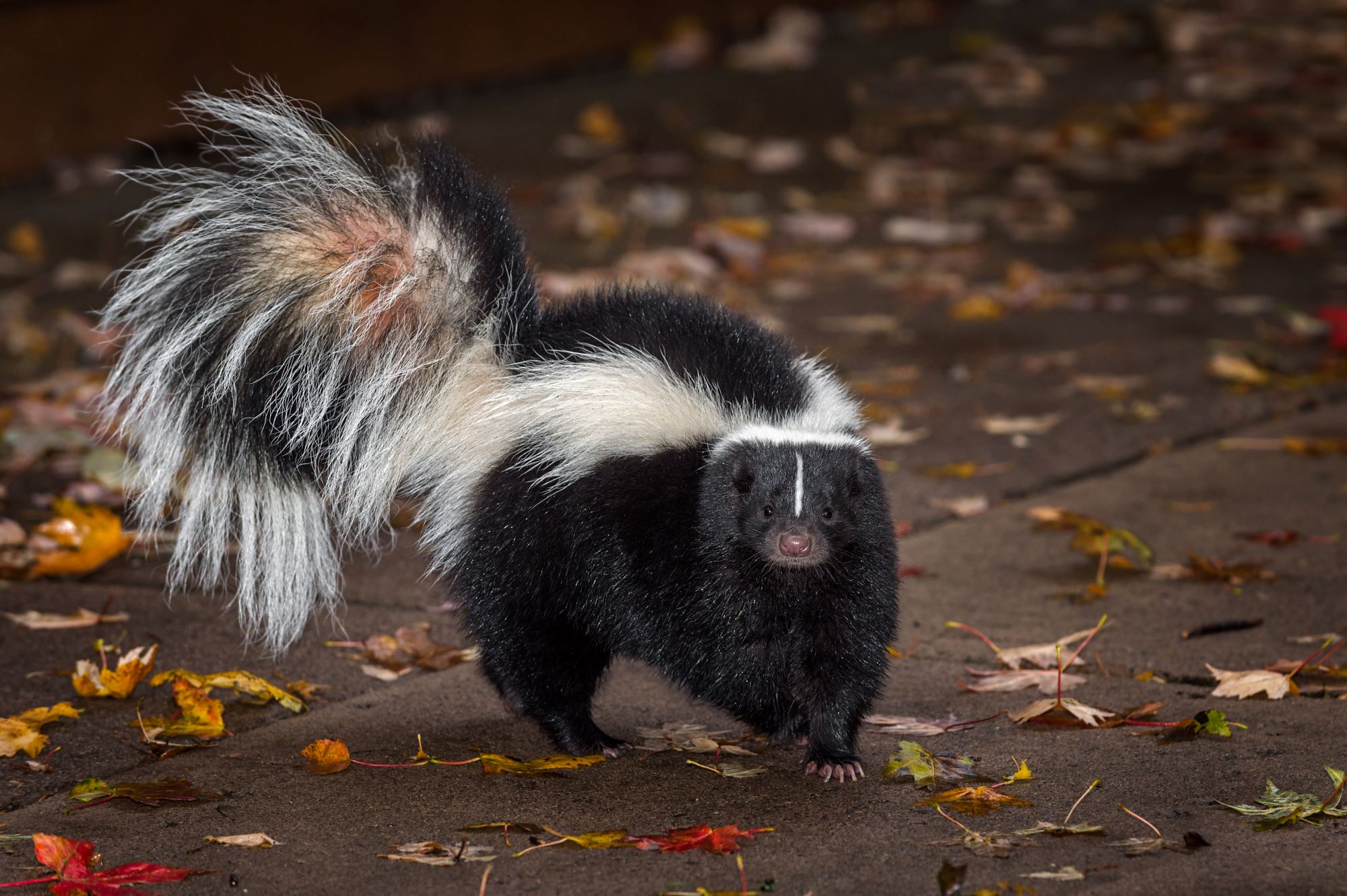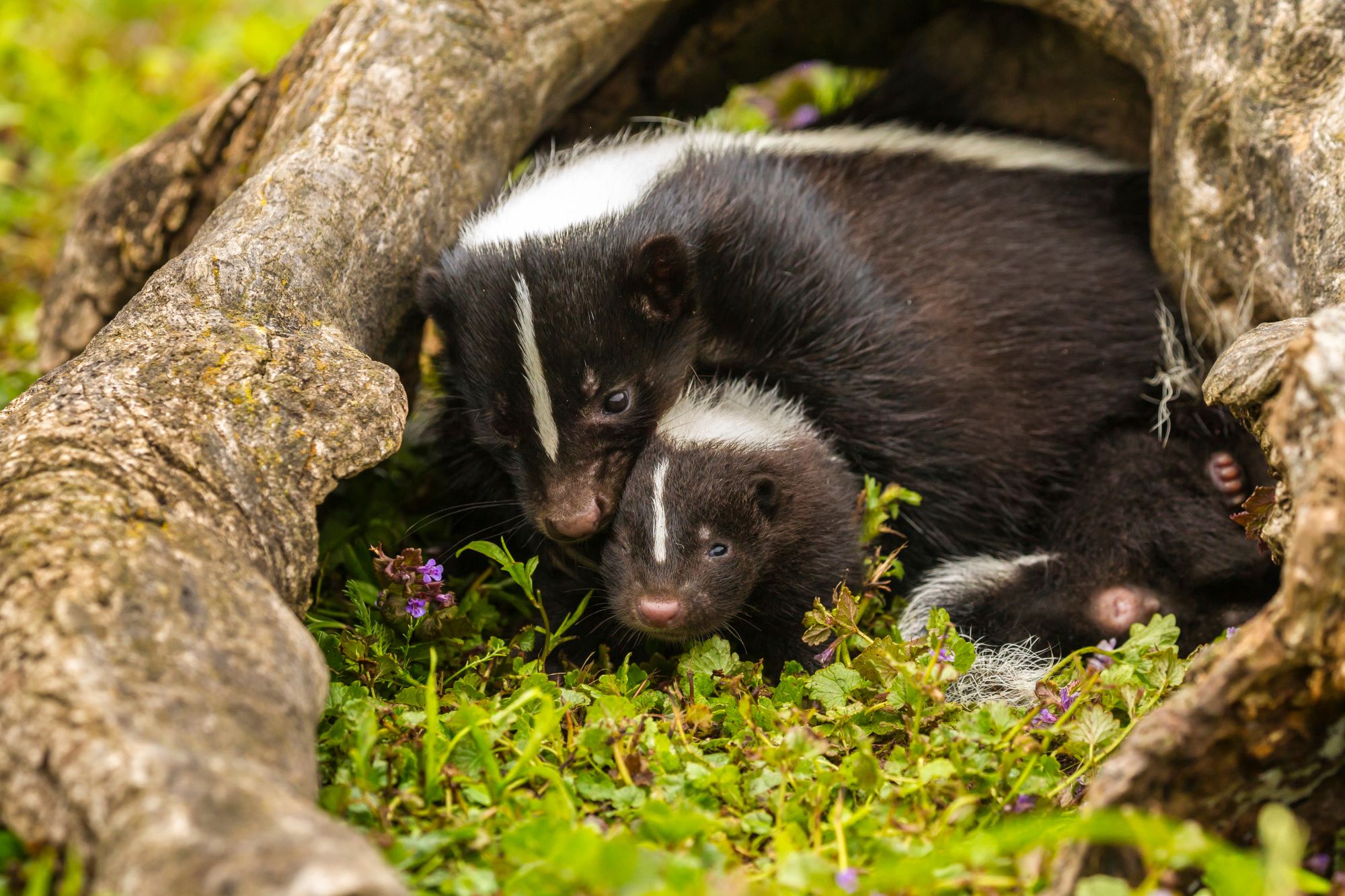
Striped Skunk in Utah
The striped skunk, Mephitis mephitis, is a notable and adaptable mammal in Utah's wildlife ecosystem, recognized for its distinctive black fur with a white stripe that extends from the head, divides along the back, and continues down to the tail. This contrasting coloration is not just distinctive but also serves as a warning signal to potential predators of the skunk's notorious defense mechanism: the ability to spray a pungent and irritating musk from specialized glands near its tail.
Physically, these skunks have a stocky build with relatively short, stout legs, and a fluffy tail that adds to their distinctive silhouette. Adults typically measure about 20 to 30 inches in length, including the tail, and weigh between 6 to 10 pounds. This size allows them to be nimble yet robust enough to handle various environmental conditions.

In terms of habitat, striped skunks in Utah exhibit remarkable adaptability. They are found in diverse environments, including woodlands, grasslands, and even residential areas. Skunks prefer habitats that provide both ample food sources and shelter, such as hollow logs, brush piles, or spaces under porches or buildings in urban areas. This adaptability is a key factor in their widespread distribution across the state.
Striped skunks are nocturnal, primarily active during the night when they venture out to forage. They have a varied diet, reflective of their omnivorous nature. This includes insects like beetles and grasshoppers, which they actively hunt, contributing to pest control. Additionally, their diet encompasses small mammals, eggs, fruits, and vegetation, making them integral players in their ecosystems by helping control various animal populations and aiding in seed dispersal.
The breeding season for striped skunks occurs once a year, typically in late winter. Mating rituals are unique, involving complex behaviors from both males and females. Females give birth to a litter of kits in late spring, with an average of four to seven offspring. The mother then raises the kits in the den, teaching them essential survival skills including foraging and defensive tactics. The young skunks become independent in late summer but often stay close to their birth area.
In urban settings, striped skunks often come into contact with humans, leading to various interactions. While skunks usually avoid confrontation, they can become a nuisance by foraging in gardens, rummaging through trash, and potentially transmitting diseases like rabies and canine distemper. Their infamous defensive spray, which can reach targets up to 10 feet away, is a significant concern for pets and people, as the odor is notoriously difficult to remove and can linger for days.
Conservation-wise, the striped skunk does not face significant challenges in Utah. Their population is stable, reflecting their ability to thrive in a variety of habitats and conditions. However, ongoing monitoring is essential to ensure that changes in land use, urban expansion, and potential disease outbreaks do not negatively impact their populations.
In summary, the striped skunk in Utah is a fascinating and vital part of the state's wildlife, contributing to ecological balance through its diet and foraging habits. Its adaptability to diverse habitats, combined with its unique defensive strategy, make the striped skunk a resilient and enduring presence in Utah's natural landscape.